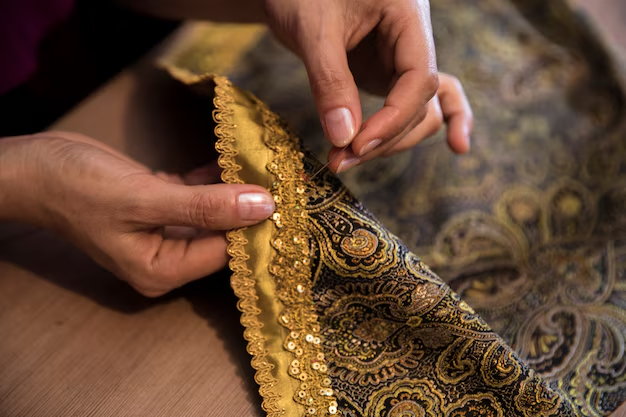
Culture is the lifeblood of society, shaping our identities, guiding our behavior, and influencing the way we interact with others. It encompasses the shared beliefs, values, customs, practices, and material objects that bind individuals together within a community. From language and religion to art and food, culture is the invisible thread that connects us, offering both a sense of belonging and a framework for understanding the world around us.
In this article, we will explore the profound impact culture has on society and human connection, and how it plays a pivotal role in shaping the ways we perceive ourselves and others.
Defining Culture: A Complex Tapestry
Culture is not a singular entity but a dynamic and multifaceted system that evolves over time. It can be understood as a set of collective behaviors, norms, symbols, and practices that are passed down through generations. While culture is often associated with national or ethnic identity, it also extends to subcultures, such as those formed by age groups, professions, or even fandoms. Essentially, culture is what we share as human beings, providing both common ground and diversity in human experiences.
In addition to tangible elements like clothing, food, and architecture, culture also includes intangible aspects, such as values, rituals, beliefs, and worldviews. These elements help to define who we are, how we relate to others, and how we interact with the world. As cultures evolve, they absorb new influences, creating a dynamic and ever-changing landscape that reflects the complexities of human society.
The Role of Culture in Shaping Society
Culture serves as the foundation of society, influencing social structures, systems, and norms. It sets the framework within which laws, traditions, and social expectations are built, guiding how individuals behave and interact with each other. For example, different cultures have distinct social norms regarding communication, such as the importance of eye contact, body language, or formal versus informal language. These norms influence how we understand respect, politeness, and authority, shaping our relationships and interactions.
In a broader context, culture can also influence the political and economic systems of a society. In some cultures, individualism is emphasized, leading to systems that prioritize personal rights and freedoms. In other cultures, collectivism may take precedence, with an emphasis on community well-being and shared responsibility. The cultural values embedded within a society’s structure also influence its economic systems—capitalism, socialism, or other models—shaping the way resources are distributed and how opportunities are perceived.
Moreover, cultural traditions and practices can serve to reinforce social cohesion and create a sense of belonging. Festivals, ceremonies, and rituals bring people together, offering moments of shared celebration and reflection. These traditions help communities maintain continuity and pass on knowledge to future generations, ensuring that the cultural fabric remains strong.
Culture as a Driver of Human Connection
At its core, culture fosters human connection by providing a shared sense of identity. From the family unit to global communities, culture forms the basis for human relationships, helping individuals understand their place in the world and relate to one another. Through culture, we find common ground in our values, experiences, and expressions.
For example, language is one of the most powerful tools for connecting people across cultures. It not only allows us to communicate but also reflects the unique worldviews and philosophies of different societies. Whether it’s the deep philosophical connotations embedded in the Chinese concept of “wu wei” (the art of effortless action) or the specific gestures of gratitude in French culture, language allows us to express ideas and emotions that are deeply rooted in cultural contexts.
Art, music, and literature also provide powerful means of connection. Across the world, we find that artistic expressions—whether through painting, dance, or storytelling—are ways for people to share their experiences, emotions, and aspirations. Music, for example, transcends language barriers, connecting individuals from different cultural backgrounds through rhythm, melody, and emotion. The global popularity of genres such as jazz, reggae, or K-pop highlights how culture can unite people beyond geographical and linguistic divides, creating cross-cultural bonds that bridge differences and foster mutual understanding.
Cultural Identity and Diversity
Cultural identity is a crucial aspect of how we define ourselves and navigate the world. It shapes our values, beliefs, and actions, guiding the choices we make and the roles we take within society. Our cultural identity is often influenced by the community we belong to—whether it’s national, ethnic, religious, or even subcultures like those related to hobbies or ideologies. This identity gives us a sense of belonging, creating shared experiences and a deeper connection with those who share similar cultural backgrounds.
However, in today’s increasingly globalized world, cultural identity is often fluid and complex. We are exposed to a variety of cultures, leading to the blending of ideas, practices, and traditions. This cultural exchange can enrich societies, creating opportunities for new forms of expression, innovation, and understanding. For example, the fusion of different cuisines, such as Mexican-Korean tacos or Indian-Chinese food, exemplifies how cultural boundaries can blur, leading to fresh and exciting innovations that appeal to diverse populations.
At the same time, globalization has raised challenges related to cultural preservation and appropriation. While cultural exchange can be a source of enrichment, it’s important to approach it with sensitivity and respect, ensuring that the uniqueness of each culture is celebrated rather than commodified or misunderstood. This tension between cultural sharing and preservation is a central issue in many societies today.
The Impact of Culture on Conflict and Cooperation
While culture can be a unifying force, it can also be a source of division. Differences in cultural values and practices can lead to misunderstandings, conflicts, and even wars. Religious, ethnic, and ideological differences have often fueled violence and animosity throughout history. The clash between cultures is sometimes characterized by competing notions of right and wrong, justice and oppression, freedom and control.
For example, cultural differences in the interpretation of human rights, gender roles, or political systems can create tensions between nations, communities, or even individuals. The rise of extremism and intolerance in various parts of the world is often fueled by rigid cultural beliefs and a rejection of cultural diversity. This highlights the importance of fostering cultural understanding and respect as a means of preventing conflict.
On the other hand, culture also plays a critical role in fostering cooperation and peace. Intercultural dialogue, diplomacy, and education can help bridge gaps, promoting mutual respect and understanding. The success of international institutions like the United Nations, which works to promote peace and human rights across cultures, is a testament to the potential of cultural exchange to resolve conflicts and build alliances. By embracing cultural diversity and finding common ground, societies can foster a more harmonious and interconnected world.
The Future of Culture in a Changing World
As the world becomes more interconnected, culture will continue to play a key role in shaping societies and human relationships. The digital age has enabled rapid cultural exchange, allowing people from all corners of the world to share ideas, experiences, and practices. Social media, online platforms, and global communication have created new avenues for cultural expression, allowing individuals to connect across vast distances and engage in real-time dialogue.
However, this interconnectedness also presents challenges. The spread of misinformation, cultural homogenization, and the loss of traditional practices are concerns that need to be addressed as we navigate this rapidly changing cultural landscape. As cultures continue to evolve, there will be an increasing need to preserve and respect cultural diversity while finding ways to adapt to new technologies and global realities.
The future of culture will likely be characterized by greater fluidity, blending old and new traditions, and fostering deeper connections between individuals from different cultural backgrounds. Embracing this dynamic interplay will be essential to building a more inclusive, respectful, and interconnected world.
Conclusion
Culture is more than just a backdrop to our lives; it is a living, breathing force that influences how we relate to each other and the world around us. It shapes our identities, strengthens our connections, and provides the framework for understanding society. As we continue to navigate a rapidly changing global landscape, culture will remain a powerful force that both unites and challenges us, offering valuable lessons in empathy, cooperation, and human connection. By understanding and respecting the richness and diversity of cultures, we can build a future where humanity is more connected, compassionate, and cohesive.




Autocad crack
Autocad 2025
autodesk autocad crack
auto cad crack
fl studio crack
fl studio 2025
idm crack
idm 2025
Internet Download Manager crack
revit crack
autodesk revit 2025
autodesk revit crack
photoshop crack
phohoshop 2025
adobe photoshop crack
photoshop keygen
photoshop free